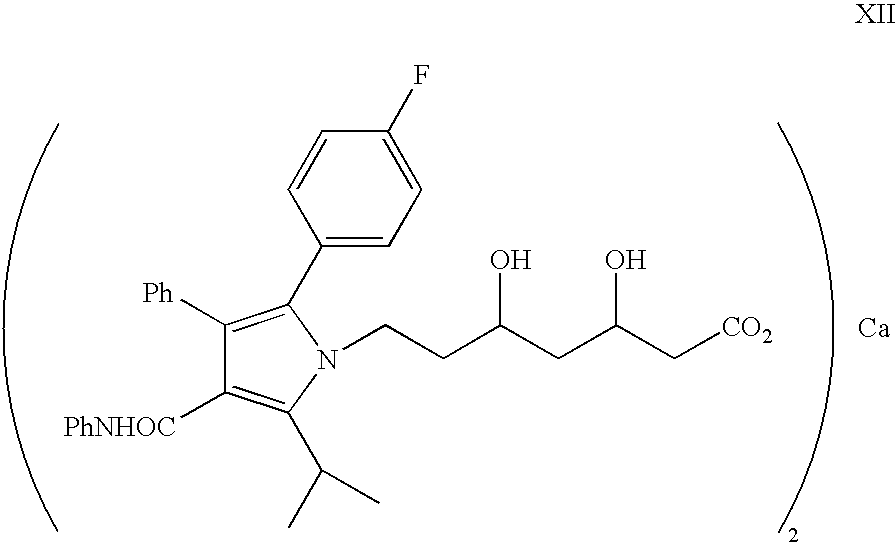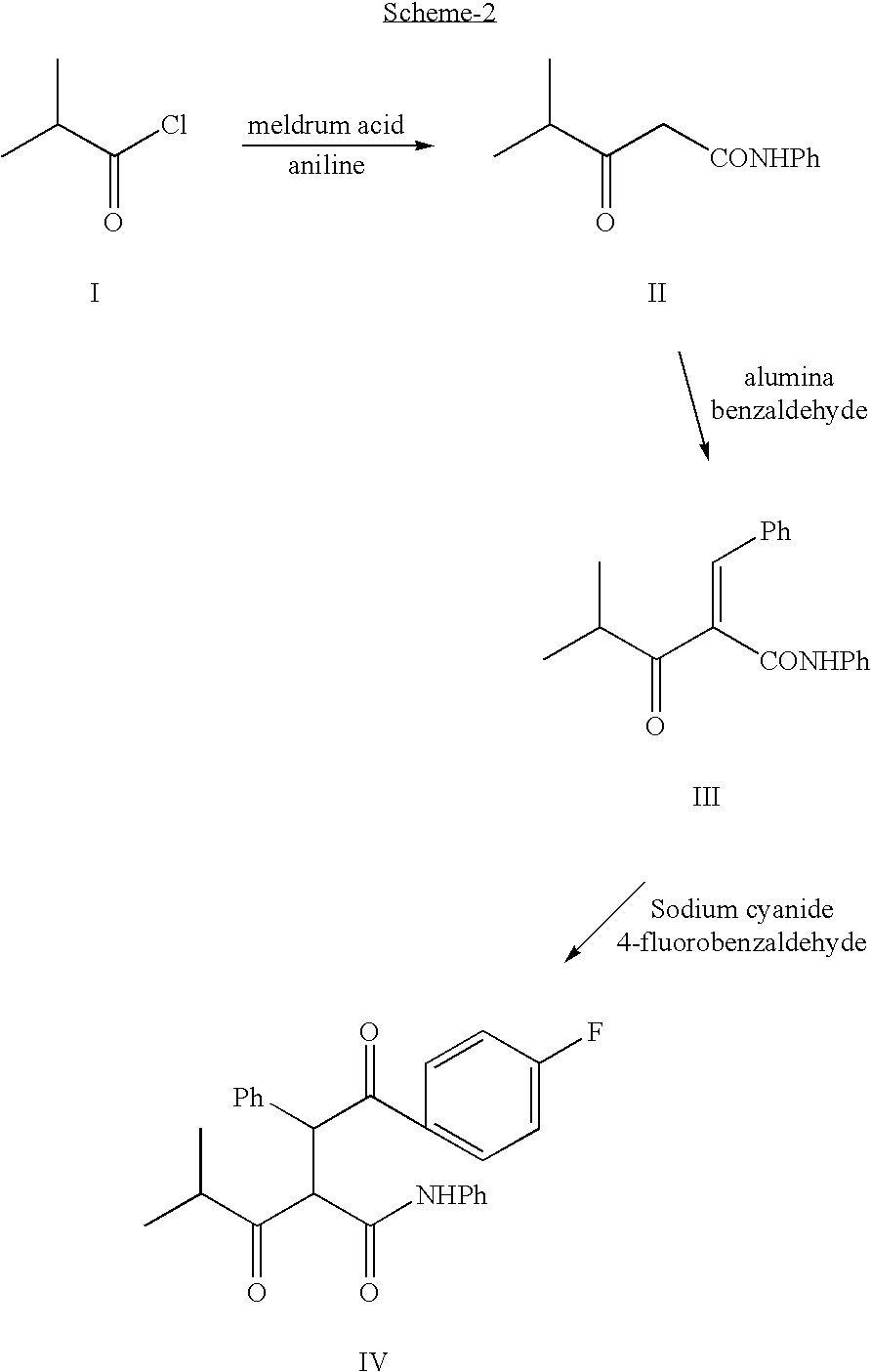Process for the synthesis of atorvastatin and phenylboronates as intermediate compounds
a technology which is applied in the field of synthesis of atorvastatin and phenylboronates as intermediate compounds, can solve the problems of poor enantiomeric excess, loss of the other active isomer, and risk for large-scale preparation
- Summary
- Abstract
- Description
- Claims
- Application Information
AI Technical Summary
Problems solved by technology
Method used
Image
Examples
example 1
1.1 Preparation of 4-methyl-3-oxo-N-phenylpetanamide (Formula II).
To a suspension of malonic acid (104 g) in, acetic anhydride (120 mL) at room temperature, Conc. H2SO4 (3 mL) was added. The mixture was cooled to 20° C. followed by the addition of acetone (8 mL) drop wise. The contents were stirred at room temperature (15 min) and kept at 0-5° C. overnight and filtered. The solid was washed with cold water and cold acetone and dried. The crude material was recrystallized from acetone-hexane mixture.
Meldrum's acid (59 g) was dissolved in CH2Cl2 (200 mL) and cooled to 0C. Pyridine (73 mL) was added drop wise over a period of 30 min and the mixture was stirred for an additional 10 min. Isobutyryl chloride (44 g) was added drop wise over a period of 30 min. and the mixture was stirred at 0° C. for 1 h followed by stirring at room temperature over night. The mixture was poured into 1.5N HCl containing crushed ice. The layers were separated and the aqueous layer was extracted with CH2Cl2 ...
example 1.2
Preparation of 4-methyl-3-oxo-N-phenyl-2-(phenylmethylene) pentanamide (Formula III).
The crude amide was added to a slurry of alumina impregnated with lithium hydroxide in tetrahydrofuran. To this mixture at room temperature benzaldehyde was added. The contents were allowed to stir under reflux for 2h. The contents were filtered, tetrahydrofuran was removed under reduced pressure and the residue was extracted with CH2Cl2. The organic extracts were washed with bicarbonate, bisulfite solution, dried and concentrated under reduced pressure to afford the crude compound of formula III.
example 1.3
Preparation of 4-fluoro-α-[2-methyl-l-oxopropyl]γ-oxo-N-β-diphenylbenzene butane amide (Formula IV).
To 4-fluorobenzaldehyde in anhydrous DMF, sodium cyanide was added and the contents were refluxed for 4h. To this the intermediate from example 3 was added and the contents were stirred for an additional 18h. Usual work up affords the crude diketo compound of formula IV.
PUM
| Property | Measurement | Unit |
|---|---|---|
| temperature | aaaaa | aaaaa |
| temperature | aaaaa | aaaaa |
| temperature | aaaaa | aaaaa |
Abstract
Description
Claims
Application Information
 Login to View More
Login to View More - R&D
- Intellectual Property
- Life Sciences
- Materials
- Tech Scout
- Unparalleled Data Quality
- Higher Quality Content
- 60% Fewer Hallucinations
Browse by: Latest US Patents, China's latest patents, Technical Efficacy Thesaurus, Application Domain, Technology Topic, Popular Technical Reports.
© 2025 PatSnap. All rights reserved.Legal|Privacy policy|Modern Slavery Act Transparency Statement|Sitemap|About US| Contact US: help@patsnap.com



